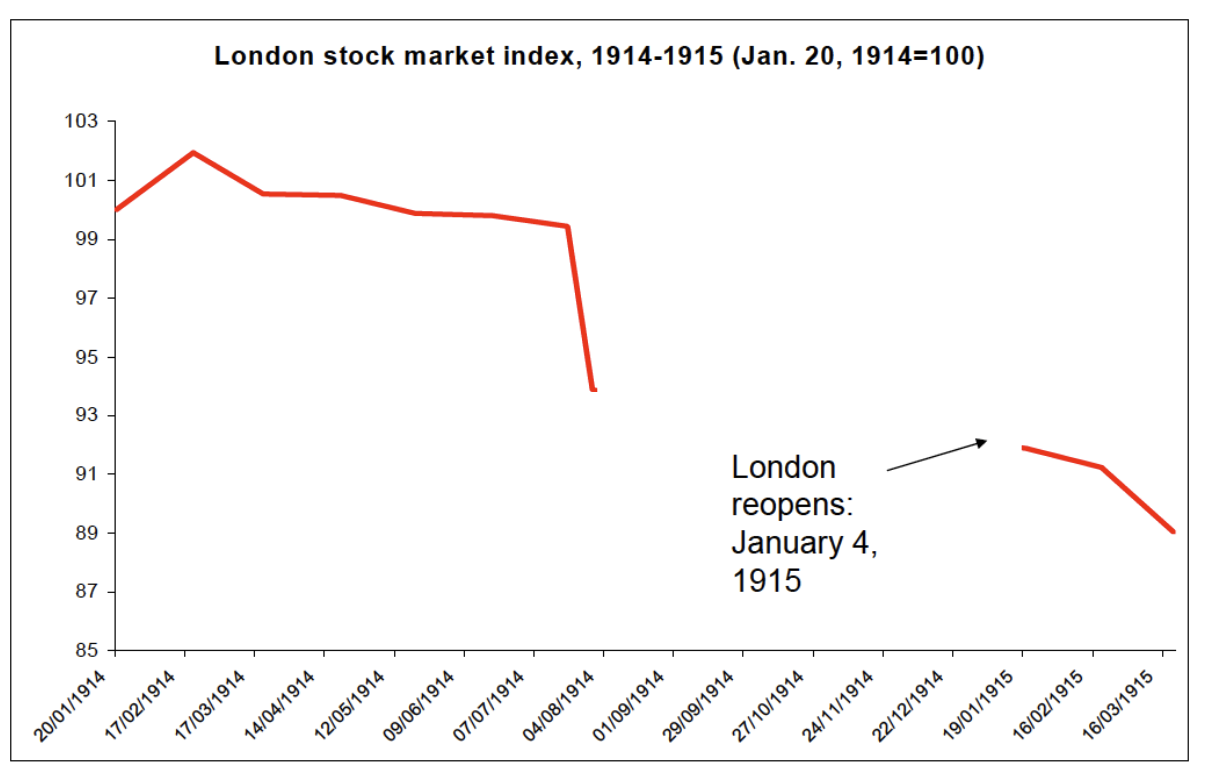Hist 8.02 Unit 4 WW1
1/19
There's no tags or description
Looks like no tags are added yet.
Name | Mastery | Learn | Test | Matching | Spaced |
|---|
No study sessions yet.
20 Terms
Eastern front
Large and expansive; from Baltic to Black Sea
Mobile, with fluid lines and large movements
Maneuver warfare, cavalry, field battles
Germany, Austria-Hungary, Russia, Ottoman Empire
Russia exits, Germany advances but loses in the end
Heavy, but not as concentrated
Western front
Narrower, confined to France and Belgium
Static, characterized by trench warfare
Trench warfare, artillery bombardments
Germany, France, UK, later U.S.
Allied victory, significant German losses
Extremely high, especially in trench warfare
bank holidays
The situation reflects the early financial response to the war, including __________, which were steps taken by the British government to stabilize the financial system and prevent further economic collapse during wartime. The graph captures the drastic impact of these events on the stock market.

John Maynard Keynes
__________ was initially optimistic about the war’s short duration, citing the immense wealth of the world but also the limited ability to convert capital into wartime resources.
Resources for War
Manpower
Food
Production
Indices of national income/GDP
USA GDP increased during the war. War isn’t fought on their home territory.
The revolution in Russia/civil war exacerbated the dip that GDP took
Germany’s descent is attributed to the blockades

Mobilizing the US War Industry
• War Industries Board – prioritizing resources and controlling prices • National Labor Relations Board
• US Railroad Administration – nationalized railroads, 1917-1920
• Food Administration
• Fuel Administration
ways to finance war
Taxation
Borrowing
Printing money
Taxation
Won’t have debt, but will be unpopular with public and needs to go through congress
Borrowing
(US does this very well domestically during WW1)
War bonds
Printing money
(Russia did this)
Extremely efficient in the short run, can create a lot of wealth in a very short period of time.
1924 Dawes Plan
– foreign loans to Germany
– ties German reparations to economic growth
Benefits of hyperinflation
Collects the inflation tax - "seigniorage"
Reduces real (private and public) debt burdens
Reduces inequality
Stimulates economic activity (temporarily)
- consumption
- employment
- investment in "real values"
- exports (via depreciation of exchange rate)
Barry Supple, War Economies
In summary, the First World War reshaped global economies through massive state intervention and the mobilization of national resources ("administered capitalism"). Governments took a much more active role in directing markets, managing labor, and controlling production to sustain the war effort. The war's aftermath saw mixed reactions to these economic transformations, with some advocating for continued state involvement, while others pushed for a return to pre-war capitalist structures.
Niall Ferguson, german inflation
In summary, the German inflation of the early 1920s was a complex crisis, driven by both economic and political factors. While inflation was seen as a necessary response to immediate economic pressures, its long-term consequences were devastating, and alternative policies might have avoided hyperinflation (reducing deficits, improving tax collection, and moderating public spending).
The difference between 1920s and 1947 was that there was too much democracy in the 20s. If there was some insulation between the reichsbank and public pressures, they could carry out sensible economic policies.
Baruch, The War Industries Board, 1962
The WIB played a pivotal role in converting the U.S. economy for war production, utilizing priority orders and persuasion to manage resources, control prices, and coordinate with Allies. While facing challenges from industry, its efforts contributed significantly to the war effort and provided key lessons for future economic mobilization strategies. (prices, persuasion, production priority, commandeering)
Bernard Baruch
Author of The Public Years
Audience for Baruch’s memoir
General public, policymakers, and scholars interested in economic history, World War I, and U.S. industrial mobilization.
Purpose for baruch’s memoir
To reflect on Baruch's experiences as the chairman of the War Industries Board (WIB) during World War I and the challenges of mobilizing U.S. industry for the war effort.
Contexualization of baruch’s memoir
The source reflects the critical role that the War Industries Board (WIB) played in overseeing and regulating industrial output during World War I. It showcases the need for government intervention in the economy during wartime, a theme that resonates with economic planning and centralized authority. Baruch's account illustrates the clash between free-market principles and the wartime necessity for state-controlled production and resource allocation. The source reflects a broader shift in global economic history, where the traditional laissez-faire economic model was challenged by the exigencies of war, marking the beginning of more coordinated government intervention in the economy, which would later influence economic policies during the New Deal and beyond.